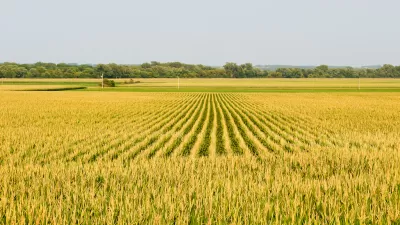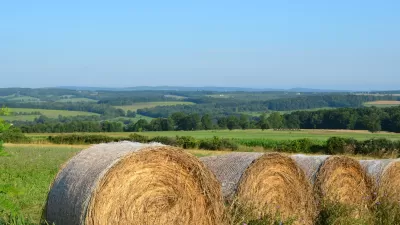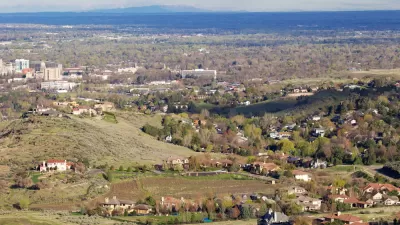The history of the earth since 1700 has been a history of human land use.

David Montgomery shares the findings of research led by Erle Ellis, a researcher at the University of Maryland, Baltimore County.
According to Montgomery, Earle and team's results show startling changes:
Three centuries ago, humans were intensely using just around 5 percent of the planet, with nearly half the world’s land effectively wild. Today, more than half of Earth’s land is occupied by agriculture or human settlements.
Earle is quoted in the article saying that climate change will someday surpass land use as the "dominant shaper of ecology in the terrestrial real." But presently and for the last several hundred years, it's been land use.
The research is supplemented by a map that shows the transformation of human land use since 1700:
Even with only one snapshot per century, the animation makes some of the trends obvious," writes Montgomery. "Large swathes of Russia and the United States become cropland over the 19th century, while livestock occupies increasing amounts of previously semi-wild land in Africa and Asia.
The maps included in the article illustrate the history of land uses on the entirety of the earth's landmass, urban and village uses, and the history of land uses in Europe.
FULL STORY: How 300 Years of Urbanization and Farming Transformed the Planet

Planetizen Federal Action Tracker
A weekly monitor of how Trump’s orders and actions are impacting planners and planning in America.

Chicago’s Ghost Rails
Just beneath the surface of the modern city lie the remnants of its expansive early 20th-century streetcar system.

San Antonio and Austin are Fusing Into one Massive Megaregion
The region spanning the two central Texas cities is growing fast, posing challenges for local infrastructure and water supplies.

Since Zion's Shuttles Went Electric “The Smog is Gone”
Visitors to Zion National Park can enjoy the canyon via the nation’s first fully electric park shuttle system.

Trump Distributing DOT Safety Funds at 1/10 Rate of Biden
Funds for Safe Streets and other transportation safety and equity programs are being held up by administrative reviews and conflicts with the Trump administration’s priorities.

German Cities Subsidize Taxis for Women Amid Wave of Violence
Free or low-cost taxi rides can help women navigate cities more safely, but critics say the programs don't address the root causes of violence against women.
Urban Design for Planners 1: Software Tools
This six-course series explores essential urban design concepts using open source software and equips planners with the tools they need to participate fully in the urban design process.
Planning for Universal Design
Learn the tools for implementing Universal Design in planning regulations.
planning NEXT
Appalachian Highlands Housing Partners
Mpact (founded as Rail~Volution)
City of Camden Redevelopment Agency
City of Astoria
City of Portland
City of Laramie





























